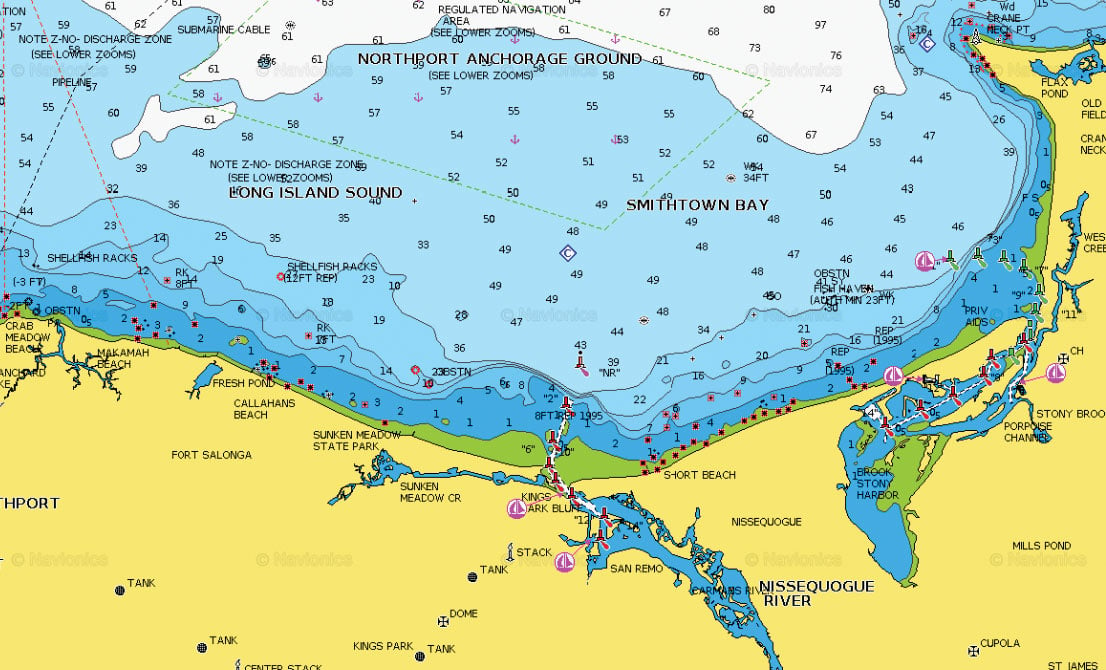
N 40.55.975 / W 73.11.170
Tucked between the LIPA Stacks and Cranes Neck in Long Island Sound, Smithtown Bay comes to life once the sand eels settle into the bay and head for the shoals for their annual spring spawn. While this phenomenon usually occurs sometime in May, it may come as early as April or as late as June with water temperatures being a crucial factor. Fluke follow the sand eels and stick around for as long as the sand eels do.
Aside from the bay’s relatively small artificial reef, Smithtown Bay is pretty much a bland body of water made up of a sandy bottom that is silted over in many areas. The buildup of silt is a result of a combination of weak currents and the outflow of brackish water coming out of the Nissequogue River, as well as sediment flowing from Stony Brook Harbor. Both the river and the harbor are part of the bay’s watershed. Water depth ranges from a few feet off the beach to 50 feet where thebay fades into the Sound.
The first area most of the sand eels settle into is the shoal along the entire length of the shoreline in 12 to 20 feet of water. Here you will find plenty of keeper fluke up to 8 pounds the first couple weeks of the spawn. As the sand eels begin to move around, the 20- and 30-foot depths are often more productive, however the shallow 10- to 15-foot depths are certainly worth exploring and will at times hold their share of keepers. Bucktails of 1/2to 1ounce tipped with Gulp 4-inch swimming mullet in white work best here.
The best indication that fluke have left a particular depth is when the area becomes thick with sea robins. That will be your cue to head for deeper water. By mid-July the action shiftsto the 50-foot range, and most fluke will be on the short side. Not to fret as this is a good time to hit the reef.
The Smithtown Reef sits in 38 to 40 feet of water and is home to five large barges and thousands of concreted tires. In addition, a section of the old Tappan Zee Bridge was added to the reef in June of last year, which should give the reef a big boost with blackfish and sea bass. Just as the bay, the entire reef is also covered in silt. However it doesn’t seem to deter tog, scup and sea bass as all three species call the inside of the barges home. Porgies dominate the catches from July through October, however by mid-October, it’s a blackfish world with fish to 8 pounds. Standard tog and porgy rigs do well with 2- to 5-ounce sinkers sufficient for this area. If you plan to do some tog fishing on the reef, better to do it within the first few days of the season as the reef gets picked fairly clean in short order due to heavy fishing pressure. And, don’t forget to give the reef a shot during the spring (April) blackfish season when pressure is much lighter than during the fall season.



